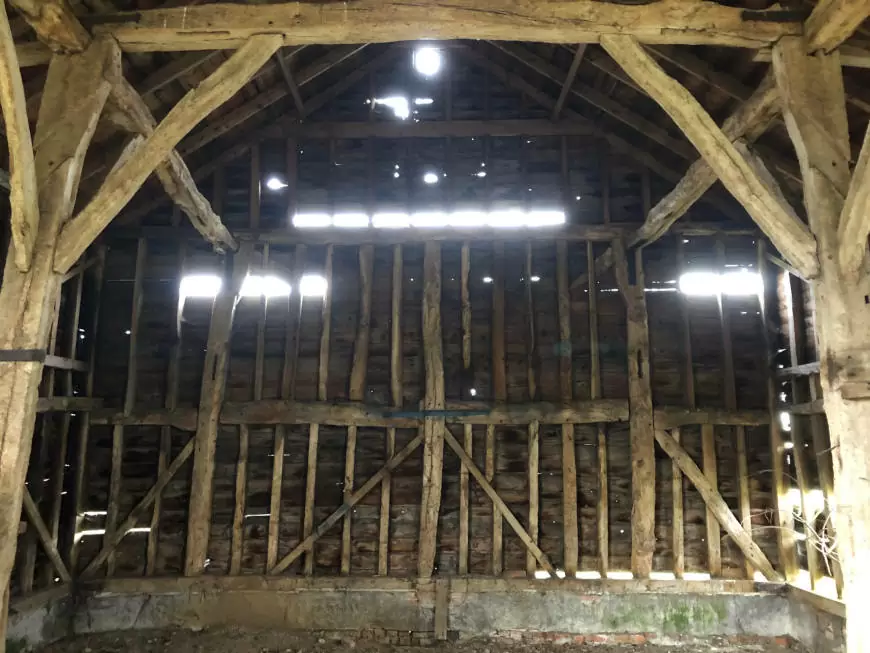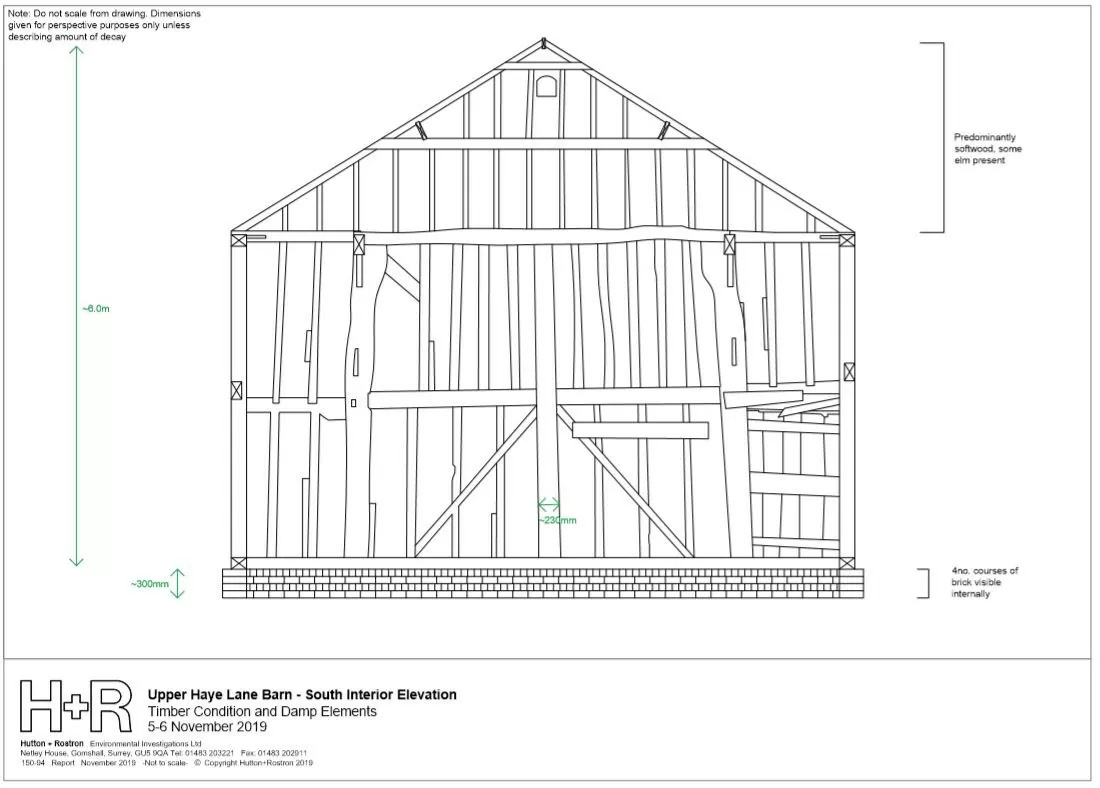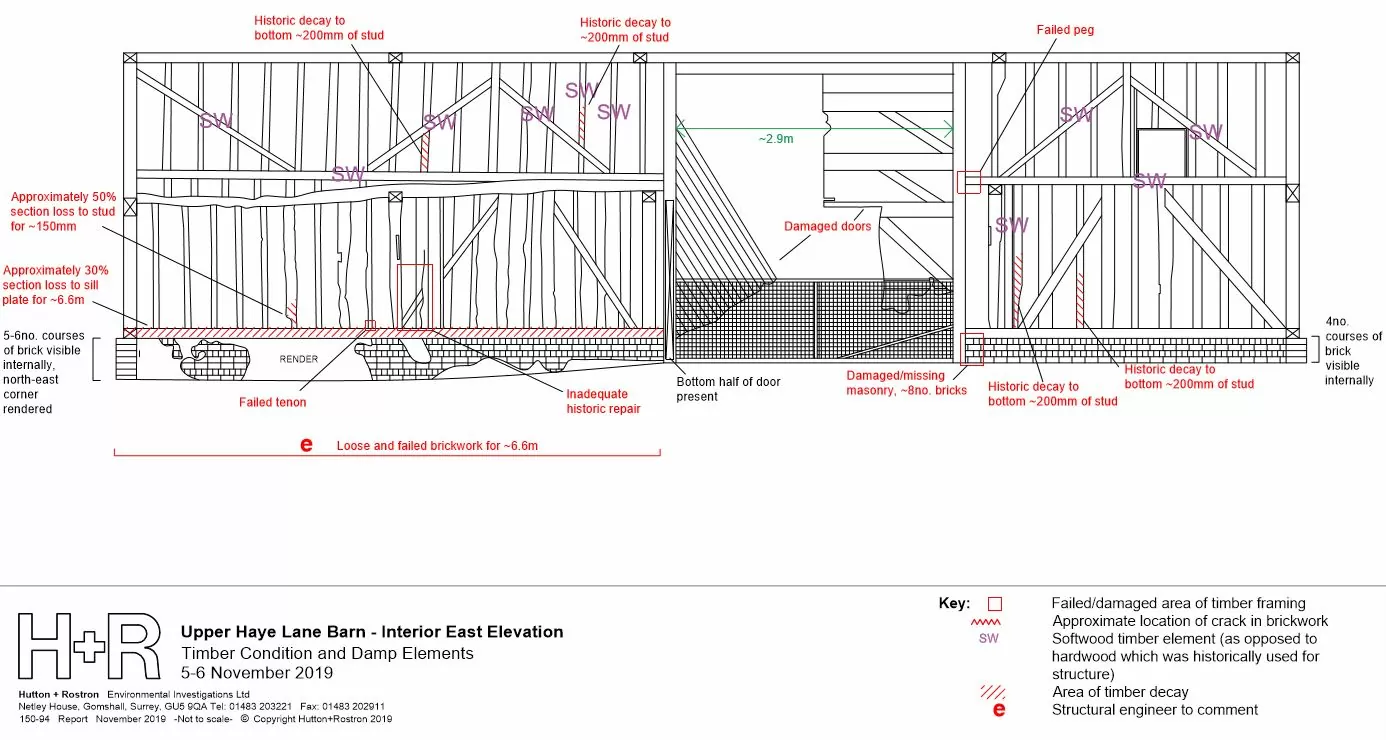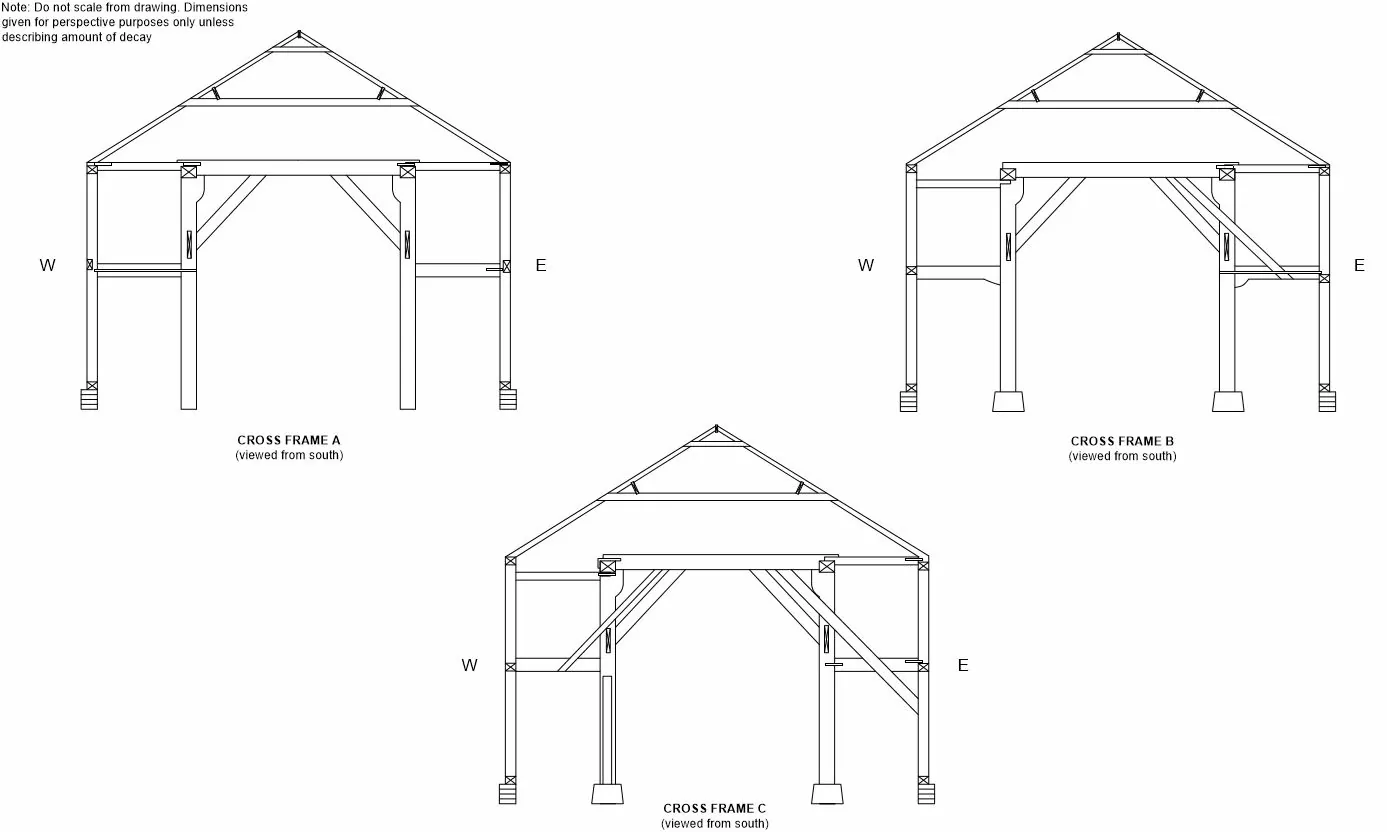Recording Historic Structures
The Problem
H+R was approached by a governmental agency about surveying a Grade II listed historic barn they had recently come into possession of which was believed to have some elements dating back to the 14th century. The remote nature of the barn had meant that little existed in the form of documentation, so as well as a full condition survey of the remaining historic fabric, the client requested the barn be recorded to a Level 3 Historic England standard including the preparation of detailed drawings and photographs.


The Solution
H+R deployed a two-man team over two days to tackle both facets of the survey. The historic fabric condition investigation included an assessment of the metal sheet roof, timber clapboarding, historic timber frame and the brick plinth detail at the foundation. All historic timber elements were subject to decay detection drilling and probed for deep moisture content to assess their condition. In addition, samples were taken to assist with timber strength grading and species identification. The main challenge facing the structure was the continued exposure to chronic water penetration via the failed roof finishes at the collapsed midstrey which had caused localised wet-rot decay to several timber elements. H+R decided to adopt a ‘phased’ approach to its schedule of recommendations for the project, laying out the conditions and recommendations in order of priority and urgency. This allowed the client to tackle the most pressing issues during phase 1 works and the lesser issues at a later date when funds and access allowed.
Read moreCase Study Gallery





